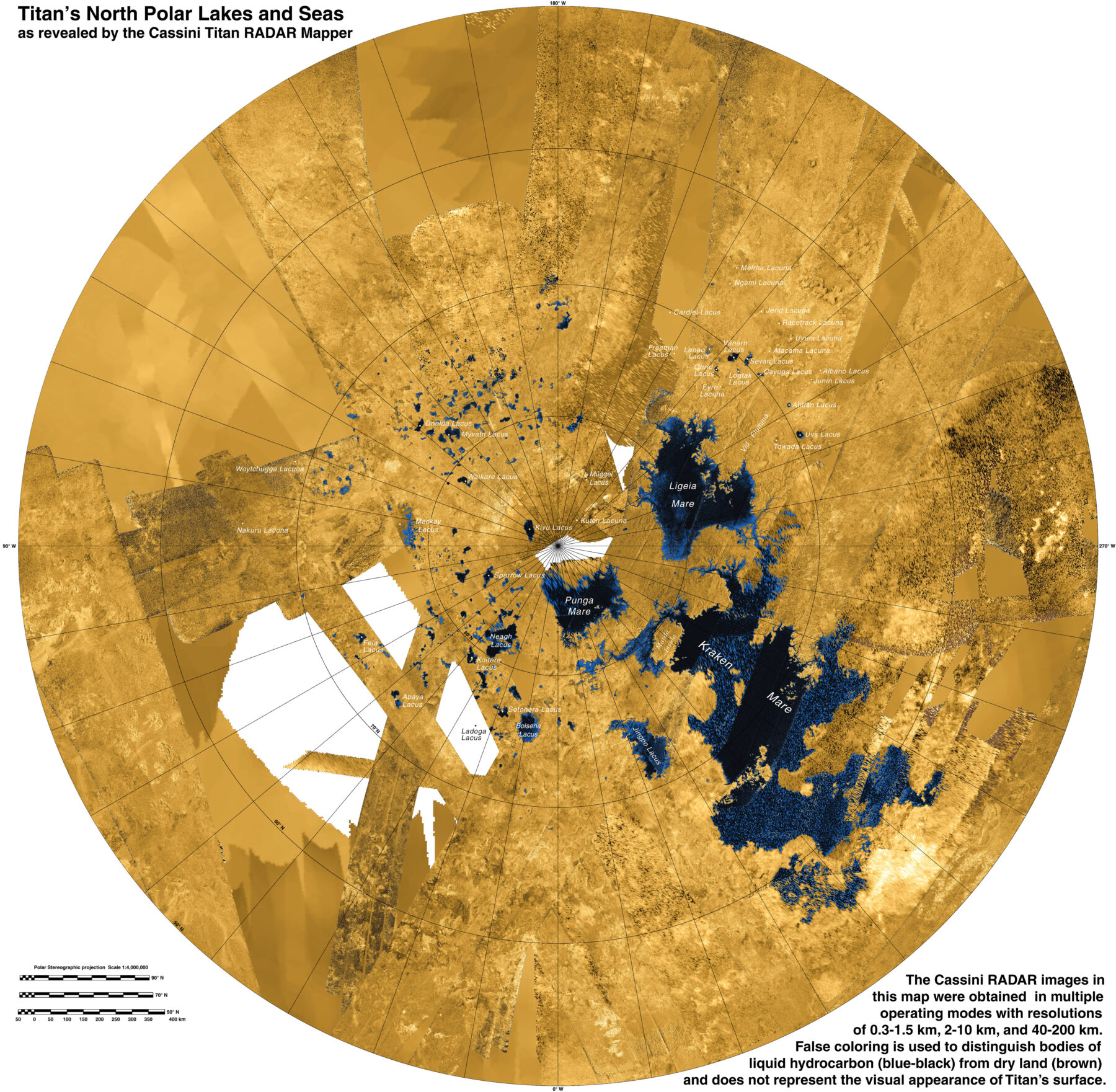Mapping confirms waves on Saturn’s moon

We know of only one other celestial body where long-lasting reservoirs of liquid pool on the surface, and it’s a very strange world indeed.
Saturn’s moon Titan is the second largest in the solar system, eclipsed only by Jupiter’s Ganymede. Its surface is not rock, but ice that’s –180°C. This ice is underlain by a global ocean of liquid water that is, in turn, underlain by a rocky core. Enveloping Titan is an atmosphere that has curious parallels with our own, despite its frigid temperature. Made mostly of nitrogen, it has a similar rainfall cycle to Earth’s, creating clouds, rivers, lakes and seas – but of liquid methane and ethane, rather than water.
Lying mostly in Titan’s north polar region, the lakes and seas had to be mapped by radar from NASA’s orbiting Cassini spacecraft following their discovery in 2007, because the atmosphere is opaque to visible light. Radar reflections hinted at a smooth liquid surface, but occasional temporary bright reflections suggested waves. Or could they be methane icebergs instead?

For more than a decade, the jury has been out on whether waves do occur in Titan’s lakes and seas. But new research by scientists at the US Geological Survey, NASA and elsewhere seems to have settled the issue. Based on the Cassini mapping, the team has examined the coastal landforms of these bodies of liquid and compared them with the way terrestrial coastlines are eroded.
They identify two basic processes: uniform erosion and wave-driven erosion. Uniform erosion, as the name suggests, takes place at the same rate everywhere and relies on chemical processes rather than mechanical wave action. Examples on Earth include lakes in karst country, where the water slowly dissolves away the limestone coastline. Wave-driven erosion, on the other hand, depends on wave height and angle, which in turn depend on wind speed and direction. These two kinds of erosion produce characteristically different shorelines on Earth.
Careful analysis of the Cassini radar maps compared with erosion simulations have led to the conclusion that Titan’s lakes and seas are, indeed, wave-eroded. The future robotic exploration of this large Saturnian moon is high on NASA’s agenda, with a robotic rotorcraft – Dragonfly – planned for launch later this decade.



